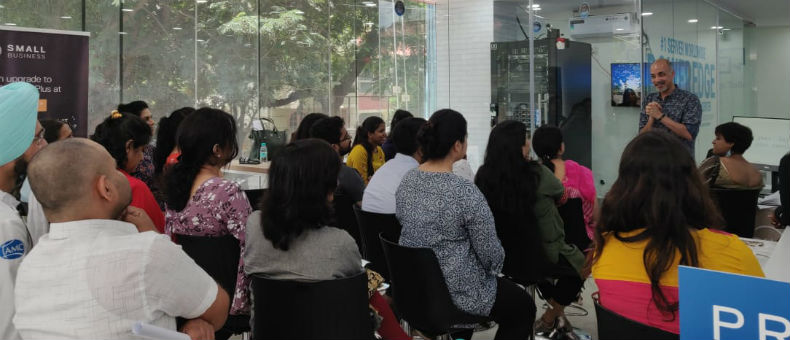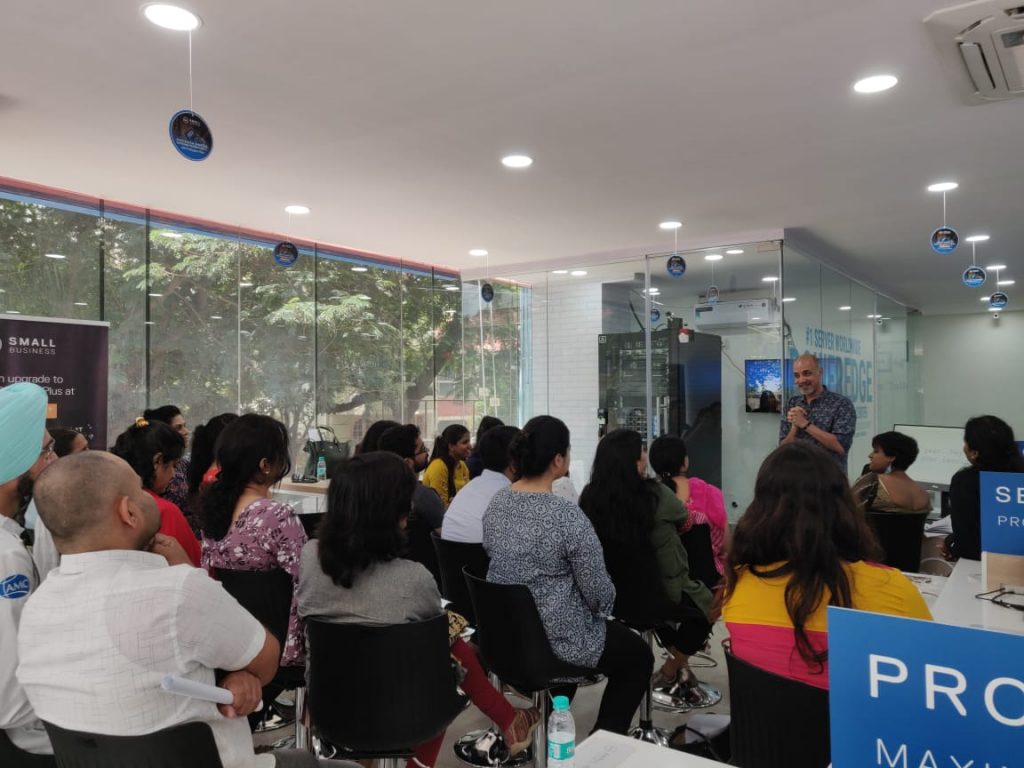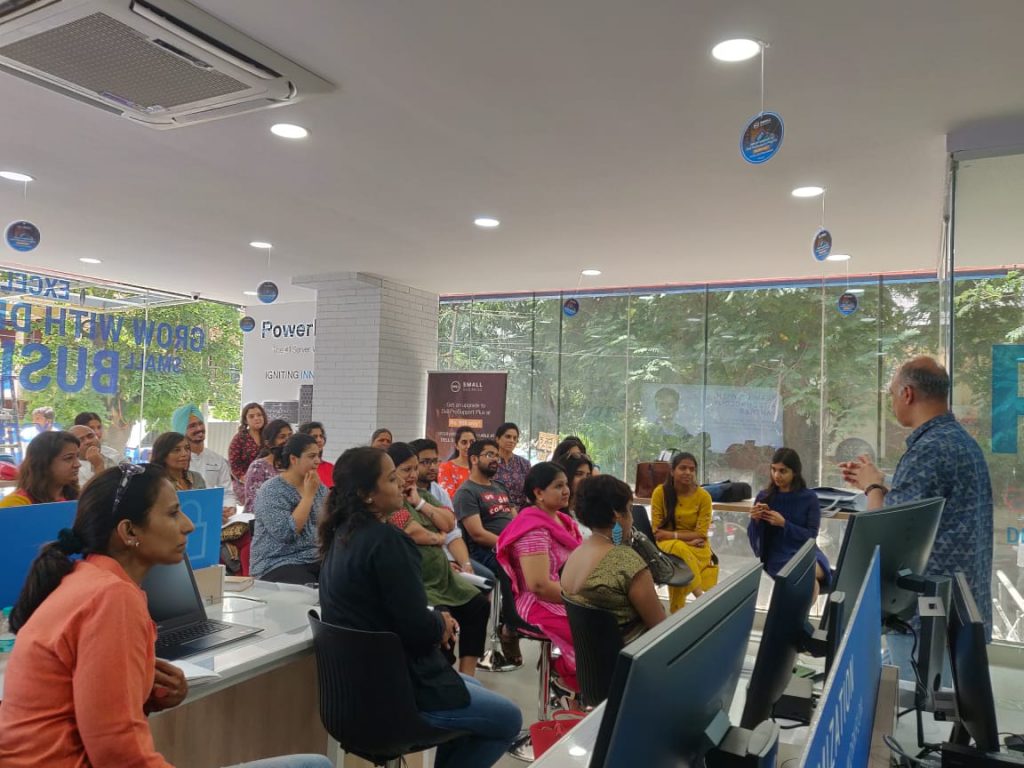
Last week, I spoke (part of my book promotion) at a gathering of (predominantly) women entrepreneurs on behalf of , a platform that empowers women with information on career, entrepreneurship, parenting, health, social issues and personal finances. The event was organized at the Dell Small Business Solution Center in Indiranagar (which housed a Crossword bookstore earlier, incidentally).
There were a lot of interesting entrepreneurs in the audience. One of them was into baby photography, and was grappling with a fall in business after moving from another country, to Bengaluru. Another one was selling plus-sized clothing and was wondering how to use Instagram when her customers don’t really feel like showing off their plus-sized figures. Shalini Singh, a PR veteran who also runs an online match-making portal called was wondering how to use social media when the privacy of the platform’s members is critical. Another that I clearly recall was a woman entrepreneur who makes hemp-based health food, and was clearly worried about the perception of hemp due to cannabis and that affecting her prospects!
It was heartwarming to know how evolved most of these entrepreneurs were in their thinking and approach to business. And it was also obvious that they have tried many tactics – organic social, paid social, among others – that are at their own disposal.
It also clearly looks like content creation remains a huge challenge for most of them. Not necessarily the nitty-gritties of creating content but the sheer effort needed to sustain and persist in creating appropriate content.

One continuing problem that I heard, which I also hear often even in digital agency circles, is around content metrics. Most of them seem stuck on individual content metrics because that’s what the platforms give them – per-tweet metrics, per-post metrics on Facebook and Instagram and so on.
I spoke about elevating that perspective to a slightly larger level – moving away from individual content metrics (because it is utterly pointless) and into having content buckets. And to create content buckets based on specific outcomes demanded by the business and customer journey – perception building, leads, market education, post-purchase engagement, loyalty and so on. And use metrics per content bucket to identify traction.
Another part I touched upon was the fact that people are the new media, while mainstream media continues to exist. People can take your content far and wide if you plan your content from that point of view. This was a slightly contentious topic since someone in the audience pointed out that conventional business norms say that you need to reach your specific target audience and not waste reaching out to non-audience.

The point is not to direct all your energies and money towards talking to a LOT of people. Your pointed efforts to reach your target audience should be the main factor. But, along with that, social media channels helps you gain word-of-mouth from a lot of people and this lot can be your secondary and tertiary leads, helping the right people reach you when they ask around for a lead/direction.
To do that, you need to think of content as a 3-layered activity. Each piece of content aimed at people-as-media has 3 layers
- the sale layer: the bottom-most part that conveys what your product/service is
- the usefulness/utility layer: the middle part that offers something useful to people; they learn something new or useful
- the entertainment layer: this is the top-most layer; makes the content interesting and entertaining no matter what the other 2 layers are, and enables engagement in the form of a share (or a click, or a comment)
It is not easy to include all layers in every piece of content. You’d need a highly creative team to churn content regularly with all 3 layers, but that’s probably not the requirement either. What is essential is to plan a 3-layered content at least once a week, thinking like a magazine editor thinks about her next month’s cover story. Focusing on the top layer gives you a wider reach week after week, and much of the bottom-most layer will also percolate in people’s mind as an incidental benefit.
I’d normally cringe at the prospect of merely promoting my book, but this opportunity was so integral my book’s theme. It was an enlightening session for me, to listen to all the women so passionate about their business – I’m truly able to appreciate and love what they are doing now that I count myself as an entrepreneur too!
